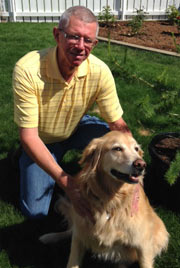Strengthening the bond between people and land at Sandstone Ranch
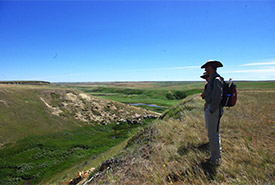
Sandstone Ranch, Milk River Ridge, AB (Photo by NCC)
Earlier this summer, the Nature Conservancy of Canada (NCC) Calgary staff and 22 Albertans collectively donned their volunteer hats and travelled to the Sandstone Ranch in Alberta to help eradicate the spread of invasive downy brome. The bus ride south from Lethbridge to the property gave us the opportunity to view the area’s topography, which is unique to Canada.
The surprising duality of the landscape is rich with grass and crops and yet mysteriously dry and barren. Never-ending rolling grasslands, traversed by a network of deep furrows cut by streams flowing out of the foothills of the Rockies, are juxtaposed against ethereal sandstone hoodoos. The uniformity of the Canadian Badlands is accentuated by the lack of trees, except for one or two huddled together in the gullies and river valleys, it seems, for protection from the dry Chinook winds.
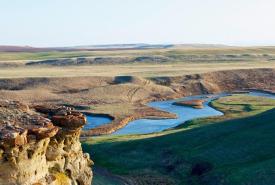
Sandstone Ranch, Alberta (Photo by Karol Dabbs)
In 2008, the Sandstone Ranch was acquired by NCC, the Alberta Conservation Association, Alberta Fish and Wildlife Association and the Sandstone Ranch Grazing Co-operative. This 4,100-acre (1,659-hectare) property is located on the Del Bonita Plateau, bordered on the north by the Milk River Ridge, and is less than 20 kilometres north of the Montana border. The Milk River Ridge is an internationally significant 1,660-square-kilometre foothills rough fescue temperate grassland, which is home to several species of rare and endangered animals, birds and plants.
The foothills rough fescue grasslands have long been regarded by conservationists as critically important habitat for wildlife. The ranching community also recognizes that these grasslands thrive on the nutrients of rich, black chernozemic soils (fertile soil containing a high percentage of phosphoric acids, phosphorus and ammonia) to support a fescue species that has a higher protein and carbohydrate content than other grasses. This is critical for the successful overwintering of cattle.
A significant threat to Alberta’s remaining grasslands is the widespread introduction of invasive alien plant species out-competing native plants for moisture and nutrients. They have become a threat to grassland diversity and are often difficult or nearly impossible to remove once established in an area. One such plant species is downy brome, also referred to as cheatgrass.
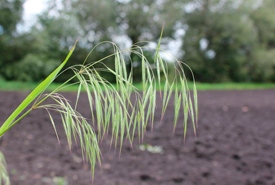
Downy brome (Photo by Nicole Kimmel, Alberta Agriculture and Forestry)
Downy brome is typically an annual winter species and reproduces by seeds only. It’s most active in the cool season and spreads rapidly with a fibrous root system. Native to the Mediterranean and southwestern Asia, it’s inconclusive how it was introduced to Alberta. One theory is that it may have been unknowingly transported by Utah farmers in the early 1800s through contaminated crop seed, such as alfalfa, and packing materials, like straw. Today, it can be spread by dirty mechanical farm machinery or by its awns (a hairy or bristle-like appendage that latches onto the fur of rodents). When downy brome is ready to spawn, it turns purple, and a single plant can produce around 5,000 seeds.
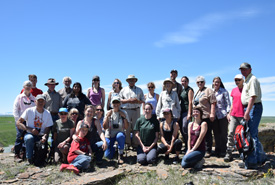
Conservation Volunteers at Sandstone Ranch, AB (Photo by NCC)
By far the most successful and effective control of downy brome is by hand-roguing or simply hand pulling — and that’s what the 22 Conservation Volunteers and NCC staff did. It’s labour intensive, but effective for smaller infestations.
When all of the downy brome root systems were removed, the plants were disposed of in plastic bags and put into the landfill. In total, seven large bags of brome were pulled that day, which may not seem like much, but those seven bags could prevent the production of an estimated 300 kilograms of seed!
By using the priceless efforts of the volunteer community to attain the collective goal of a healthier environment, projects like Sandstone Ranch are also strengthening the bond between nature and people.
Doug would like to thank NCC's Leta Pezderic and Zoe Arnold for their assistance in writing this blog.

